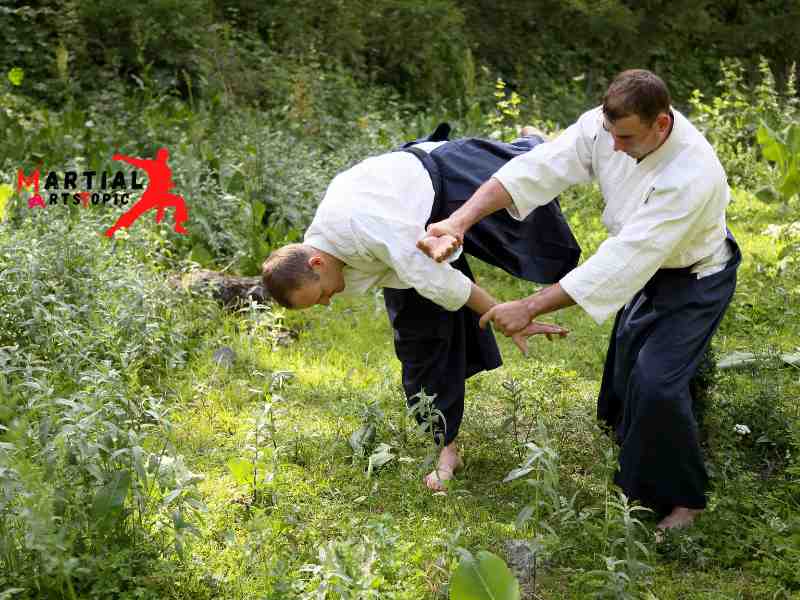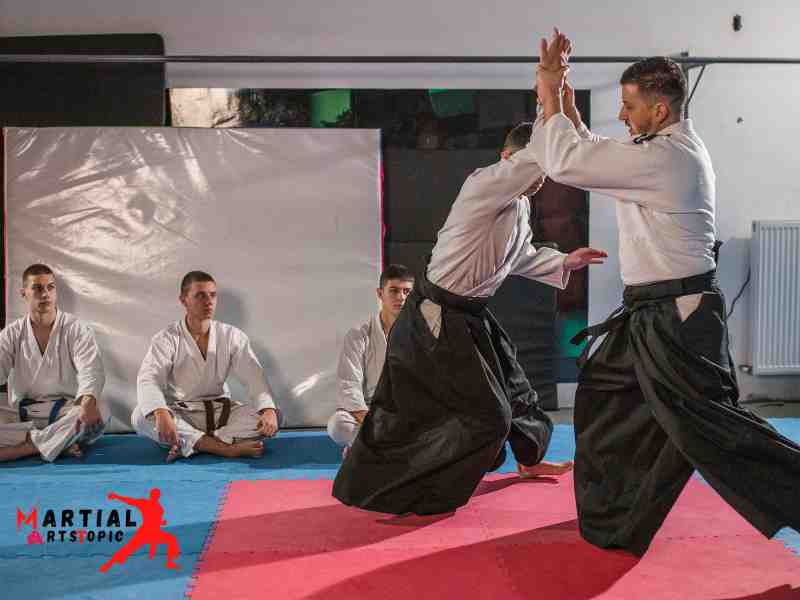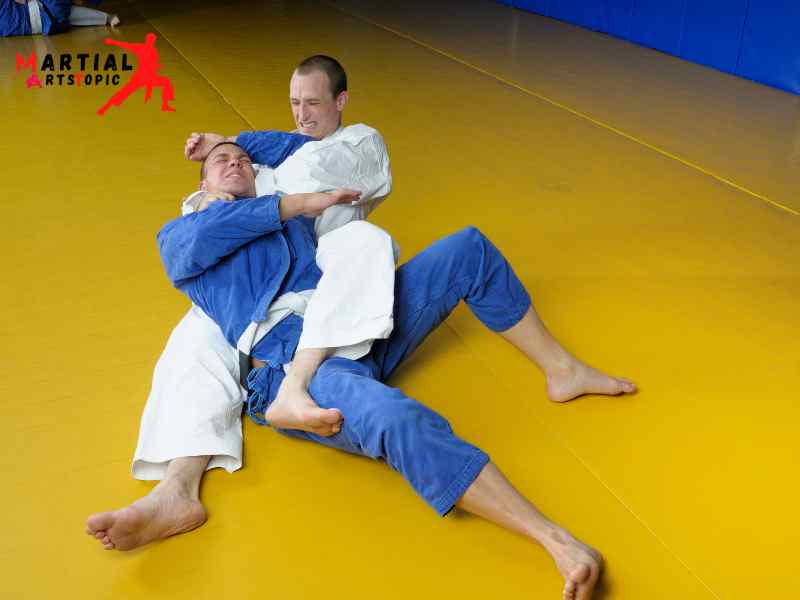
The Art of Aikido Achieve Martial Arts
The art of Aikido is a rewarding journey for those seeking to achieve excellence in martial arts. Aikido, a traditional Japanese martial art, focuses on redirecting an opponent’s energy rather than meeting force with force. By practicing Aikido, individuals can develop a solid foundation in self-defense techniques while fostering discipline, physical fitness, and mental clarity. Whether you are a beginner or an advanced practitioner, delving into the world of Aikido will enable you to unlock the secrets of this ancient martial art and empower yourself with the skills necessary to face any challenge that comes your way. Embark on your Aikido journey today and witness the transformative power of martial arts.
What is Aikido Martial Arts?
What is Aikido Martial Arts? Aikido martial arts, a Japanese self-defense practice, has gained popularity worldwide for its unique techniques and philosophy. In this introductory guide to Aikido martial arts, we will explore the origins, principles, and training methods associated with this ancient art form. Developed by Morihei Ueshiba in the early 20th century, Aikido martial arts focuses on using an opponent’s energy and movements to neutralize attacks rather than relying on brute force. Drawing inspiration from various martial arts styles, Aikido emphasizes blending and redirecting energy with fluid and circular motions. Whether you are a beginner or a seasoned martial artist, this comprehensive overview will provide you with valuable insight into the fascinating world of Aikido martial arts.
History and origins of Aikido
Aikido: Uncovering the Martial Art’s Fascinating Origins and History.When it comes to martial arts, Aikido stands out as a unique and captivating practice. Developed in Japan in the early 20th century, Aikido has gained popularity worldwide for its graceful and effective techniques. In this blog post, we will delve into the brief history and origins of Aikido, shedding light on its evolution and significance as a martial art.
Aikido, often referred to as “the art of peace,” was founded by Morihei Ueshiba, also known as O-Sensei, in the 1920s. O-Sensei drew inspiration from his training in various martial arts, including Daito-ryu Aiki-jujutsu, swordsmanship, and spiritual ideologies. He aimed to create a martial art that would not only focus on self-defense but also promote harmony and personal growth.
We rooted the philosophy behind Aikido in blending with and redirecting an attacker’s energy, rather than meeting force with force. This principle of non-resistance is what sets Aikido apart from many other martial arts. By utilizing circular movements, joint locks, and throws, practitioners aim to neutralize aggression without causing unnecessary harm.
One key aspect of Aikido’s history is the influence of O-Sensei’s spiritual beliefs. He was particularly inspired by the teachings of Omoto-kyo, a religious movement which emphasized the importance of harmony, compassion, and the pursuit of spiritual enlightenment. O-Sensei integrated these principles into Aikido, making it not just a physical practice but also a path towards personal development and spiritual awakening.
As Aikido gained recognition, O-Sensei established the Aikikai Foundation in 1940, which served as the headquarters for the art. Under his guidance, Aikido continued to develop and attract students from all walks of life. O-Sensei’s teachings emphasized the importance of discipline, respect, and the cultivation of a peaceful mind.
After O-Sensei’s passing in 1969, Aikido spread globally, with practitioners and dojos (training centers) popping up in different countries. Aikido’s principles of harmony and non-violence resonated with people seeking a martial art that focused on self-improvement rather than aggression. Today, Aikido is practiced by individuals of all ages and backgrounds, who appreciate its holistic approach to physical and mental well-being.
Explanation of the principles and philosophy of Aikido
What is Aikido Martial Arts? Aikido, a martial art that originated in Japan, is a discipline that embodies a unique philosophy and set of principles. Rooted in the concept of non-violence and harmony, Aikido focuses on redirecting an opponent’s energy rather than meeting force with force. By blending with and neutralizing attacks, practitioners of Aikido aim to achieve a state of balance and resolution. This martial art promotes self-defense techniques that prioritize protecting oneself and the attacker from harm, emphasizing the importance of respect and unity. Aikido’s principles of fluidity, circular movement, and mindfulness not only enhance physical strength but also cultivate mental and spiritual well-being. As a holistic practice, Aikido offers individuals the opportunity to develop discipline, self-confidence, and a profound understanding of the interconnectedness of all beings.
Basic Techniques in Aikido

Aikido, a martial art that originated in Japan, is known for its effective self-defense techniques and principles of harmony and non-resistance. In this article, we will explore some of the basic techniques in Aikido that practitioners can learn and apply in their training. From throws and joint locks to fluid movements and blending with an opponent’s energy, Aikido offers a holistic approach to self-defense. By mastering these fundamental techniques, individuals can enhance their physical fitness, cultivate mental discipline, and gain a deeper understanding of the art of Aikido. Whether you are a beginner or an experienced martial artist, incorporating these basic techniques into your Aikido practice can contribute to your overall growth and development.
Step-by-step guide to executing basic techniques
Step-by-step guide to executing basic techniques in the art of Aikido martial arts. Aikido, a dynamic and effective self-defense system, incorporates various techniques that require precision and skill. To execute these techniques successfully, follow these steps. Firstly, establish a stable and balanced stance, ensuring proper foot positioning. Then, focus on maintaining a relaxed posture and a calm mind to effectively respond to your opponent’s movements. Next, engage in controlled breathing, which aids in maintaining stability and concentration during the execution of techniques. Finally, practice the precise and fluid movements of each technique, emphasizing proper body alignment and utilizing the principles of leverage and redirection. By following this step-by-step guide, you will develop a solid foundation in executing basic Aikido martial arts techniques.
1. Tai Sabaki (body movement)
Tai Sabaki, also known as body movement, is a fundamental concept in Aikido martial arts. It refers to the efficient and effective use of body positioning and footwork to evade and redirect an opponent’s attack. In Aikido, the goal is not to meet force with force, but rather to blend with and redirect the incoming energy. By mastering Tai Sabaki, Aikido practitioners can achieve fluidity, balance, and control in their movements, allowing them to neutralize and redirect an opponent’s force with minimal effort. Whether you are a beginner or an advanced practitioner, understanding and applying Tai Sabaki is essential for mastering the art of Aikido.
2. Ukemi (falling and rolling)
Ukemi, also known as falling and rolling, is a fundamental aspect of Aikido martial arts. In Aikido, practitioners learn techniques to effectively break their fall and minimize the risk of injury during throws and techniques. By mastering ukemi, students develop skills to safely absorb and redirect the energy of an attack, allowing for a smoother flow of movements. Aikido emphasizes the importance of proper body alignment, flexibility, and coordination when executing ukemi, ensuring practitioners can seamlessly transition from standing to the ground. Regular practice of ukemi not only enhances one’s ability to protect oneself but also promotes body awareness and agility.
3. Katate Dori (single-hand grab)
Katate Dori, also known as single-hand grab, is a fundamental technique in the practice of Aikido martial arts. In this technique, the defender is required to handle an attacker’s wrist grip with precision and fluidity. By utilizing strategic body movements and redirecting the opponent’s energy, Aikido practitioners are able to neutralize the attack and maintain control of the situation. Katate Dori serves as a building block for more advanced techniques in Aikido, highlighting the art’s emphasis on blending with and redirecting an opponent’s force rather than meeting it head-on. With consistent practice and dedication, one can develop a strong foundation in Aikido through mastering the techniques of Katate Dori.
4. Shomen Uchi (front strike)
Shomen Uchi, also known as the front strike, is a fundamental technique in the practice of Aikido martial arts. It involves an attacker striking directly towards the face or head of the defender. In Aikido, the focus is not on meeting force with force, but rather on redirecting and blending with the energy of the attack. By utilizing precise movements and control, practitioners of Aikido can effectively neutralize Shomen Uchi strikes, turning the attacker’s energy against them. With regular practice and proper technique, Aikido practitioners can develop the skills necessary to defend against Shomen Uchi and other similar attacks in real-life situations.
5. Yokomen Uchi (side strike)
Yokomen Uchi, also known as the side strike in the practice of Aikido martial arts, is a fundamental technique that focuses on defending against an opponent’s attack from the side. Aikido martial arts practitioners employ precise footwork, blending movements, and redirecting the attacker’s energy to neutralize the strike effectively. Yokomen Uchi is a crucial skill that enhances coordination, balance, and self-defense abilities in Aikido practitioners. By mastering this technique, students of Aikido martial arts can develop their overall martial arts skills and effectively handle real-life self-defense situations.
6. Tsuki (punches)

Tsuki, also known as punches, is an essential component of aikido martial arts. In this dynamic and powerful technique, practitioners learn to deliver strikes using their fists with precision and speed. Tsuki techniques require a strong foundation in balance, body movement, and timing. By mastering the art of tsuki, aikido practitioners can effectively defend themselves while simultaneously redirecting and neutralizing the energy of their opponents. Incorporating tsuki into training sessions helps individuals develop not only physical strength but also mental focus and discipline. Whether practicing for self-defense or personal growth, aikido’s tsuki techniques offer a rewarding and empowering experience.
7.Sankyo (third technique)
Sankyo, also known as the third technique in Aikido martial arts, is a powerful and effective joint lock that can be used to immobilize an opponent. By applying pressure to the wrist joint, Sankyo allows the practitioner to control and redirect the attacker’s energy, neutralizing their aggression. This technique requires precise timing and body movement, making it an essential skill for Aikido practitioners. Incorporating Sankyo into your training not only enhances your self-defense abilities but also promotes discipline, focus, and physical fitness.
Advanced Techniques and Principles in Aikido
Advanced Techniques and Principles in Aikido are crucial for practitioners looking to deepen their understanding and mastery of this ancient martial art. Aikido, a renowned form of martial arts, emphasizes the use of blending and redirecting an opponent’s energy rather than meeting force with force. By incorporating advanced techniques and principles, Aikido practitioners can enhance their fluidity, precision, and effectiveness in executing techniques. Whether it’s exploring complex joint locks, advanced throws, or mastering the concept of “ki” or energy flow, delving into the advanced realm of Aikido martial arts opens up a whole new level of proficiency and self-discovery.
Basic Techniques in Aikido
Aikido martial arts is a dynamic and effective self-defense system that originated in Japan. In this article, we will explore some of the basic techniques in aikido. These techniques focus on using the opponent’s energy and movements against them, rather than relying on brute force. Aikido emphasizes fluid motions, joint locks, and throws to neutralize attacks and maintain control of the situation. By practicing these basic techniques in aikido, individuals can develop self-confidence, physical fitness, and mental discipline. Whether you are a beginner or an experienced practitioner, mastering these foundational techniques is essential in advancing your skills in aikido martial arts.
Aikido and Mental Well-being
Aikido, a martial art that originated in Japan, not only focuses on physical techniques but also emphasizes mental well-being. Aikido practitioners strive to achieve harmony with their opponents rather than defeating them, promoting a sense of inner peace and balance. Through the practice of aikido techniques, individuals can cultivate a strong mind-body connection, enhancing their mental well-being. The discipline and mindfulness cultivated in aikido training can help reduce stress, improve concentration, and develop self-confidence. Incorporating aikido into one’s lifestyle can be a powerful tool for achieving mental well-being and maintaining a healthy mindset.
Benefits of Practicing Aikido
Practicing Aikido, a martial art that originated in Japan, offers a wide range of benefits for individuals of all ages and fitness levels. Aikido focuses on self-defense techniques that utilize the opponent’s energy and movements, making it an effective martial art for both men and women. Regular practice of Aikido can improve physical fitness, flexibility, and coordination, while also enhancing mental focus and discipline. Additionally, Aikido promotes self-confidence, stress reduction, and the development of a peaceful mindset. Whether you are looking to improve your physical abilities or cultivate a sense of inner calm, Aikido martial arts can provide you with a holistic approach to personal growth and well-being.
Aikido Philosophy and Lifestyle
Aikido philosophy and lifestyle are integral aspects of practicing this ancient Japanese martial art. Aikido, known for its graceful and fluid movements, embodies the principles of harmony, non-resistance, and self-defense. The philosophy behind aikido emphasizes redirecting an opponent’s energy and using it to neutralize their attack, rather than meeting force with force. This martial art promotes the cultivation of a calm and focused mind, as well as physical strength and agility. Aikido’s holistic approach extends beyond the dojo (training hall) and into everyday life, encouraging practitioners to apply its principles of harmony and non-violence in their interactions with others. Aikido’s philosophy and lifestyle offer individuals the opportunity to cultivate both inner and outer strength while fostering a sense of balance and harmony in their lives.ikido vs Other Martial Arts
Aikido vs Other Martial Arts
When comparing Aikido to other martial arts, it is important to understand its unique principles and techniques. Aikido, a Japanese martial art, emphasizes redirecting an opponent’s energy rather than direct confrontation. Unlike more aggressive martial arts like Karate or Judo, Aikido practitioners aim to blend and harmonize with their opponent’s movements. This non-aggressive approach makes Aikido a popular choice for individuals seeking self-defense skills without the intent to harm. Additionally, Aikido’s focus on joint locks and throws offers practical techniques for real-world situations. Whether you are interested in self-defense or personal growth, Aikido martial arts provide a holistic approach to physical and mental development.
Aikido and Self-Defense

Aikido and Self-Defense: Unleashing the Power of Aikido Martial Arts. In today’s world, where personal safety is of utmost importance, finding an effective self-defense system is crucial. One martial art that stands out from the rest is Aikido. With its unique philosophy and techniques, Aikido offers a comprehensive approach to self-defense, promoting physical fitness, mental clarity, and spiritual growth. In this blog post, we will explore the fascinating world of Aikido martial arts and how it can empower you to protect yourself while fostering personal development.
Aikido martial arts originated in Japan in the early 20th century, thanks to the visionary Morihei Ueshiba, also known as O-Sensei. Drawing inspiration from various traditional Japanese martial arts, he developed Aikido as a martial art that emphasizes harmony and non-aggression. Unlike other martial arts that focus on defeating an opponent, Aikido’s primary goal is to neutralize an attack through blending and redirecting the attacker’s energy. This philosophy makes Aikido an ideal self-defense system for anyone, regardless of age, gender, or physical strength.
One of the key principles of Aikido is the concept of “Ki,” which refers to the life force or energy present in all living beings. By harnessing and redirecting this energy, Aikido practitioners can effectively control a confrontation without resorting to violence. Through dedicated training, Aikido martial arts practitioners develop a heightened sense of situational awareness, allowing them to anticipate and neutralize potential threats, both in physical confrontations and everyday life.
What sets Aikido apart from other martial arts is its emphasis on circular, flowing movements rather than brute force. This makes it an ideal self-defense system for individuals who may not possess great physical strength. Aikido techniques involve joint locks, throws, and pins, which leverage an attacker’s momentum and aggression against them. By redirecting the force of an attack, Aikido practitioners can effortlessly neutralize even the most powerful adversaries, ensuring the safety of themselves and others.
Apart from its self-defense applications, Aikido also offers numerous benefits for physical and mental well-being. Regular practice of Aikido martial arts improves flexibility, strength, and coordination. The dynamic nature of Aikido techniques engages the entire body, resulting in increased cardiovascular endurance and overall fitness. Additionally, Aikido training promotes mental clarity, focus, and discipline, helping practitioners develop a calm and composed mindset in both challenging situations and everyday life.
Incorporating Aikido martial arts into your self-defense routine can be a life-changing experience. Not only will you acquire practical skills to protect yourself, but you will also embark on a journey of personal growth and self-discovery. Aikido teaches practitioners to cultivate a peaceful and harmonious mindset, extending beyond the dojo and permeating all aspects of life.
If you’re looking for an effective self-defense system that combines physicality, mindfulness, and personal development, Aikido martial arts is the perfect choice. Its unique philosophy, circular movements, and emphasis on non-aggression make it a powerful tool for self-defense, while also promoting physical fitness and mental well-being. Start your Aikido journey today and empower yourself with the transformative power of this remarkable martial art.
Aikido Weapons Training
Aikido weapons training is an essential aspect of practicing the martial art of Aikido. This training focuses on the use and mastery of traditional Japanese weapons such as the wooden staff (jo), wooden sword (bokken), and knife (tanto). Aikido weapons training not only enhances physical strength and coordination but also cultivates discipline, focus, and mindfulness. By incorporating weapons techniques into their practice, Aikido martial artists develop a deeper understanding of timing, distance, and body movement, which can be applied to unarmed techniques as well. Whether it’s wielding a staff or engaging in swordplay, Aikido weapons training offers practitioners a unique and dynamic way to further their skills in this traditional Japanese martial art.
Introduction to traditional Aikido weapons
Traditional Aikido weapons are an integral part of the martial art’s heritage and practice. The use of weapons such as the wooden staff (jo), wooden sword (bokken), and knife (tanto) not only enhances physical coordination and agility, but also cultivates a deep understanding of Aikido’s principles of blending with an opponent’s energy. By learning the techniques and philosophies behind these traditional weapons, practitioners can further develop their skills in Aikido and gain a greater appreciation for the art’s rich history. Whether it’s the fluid movements of the jo, the precision of the bokken, or the subtlety of the tanto, traditional Aikido weapons offer a unique and rewarding aspect of training that continues to inspire and challenge practitioners around the world.
Bokken
Bokken, also known as bokuto, is a wooden sword commonly used in Aikido martial arts. Aikido practitioners often train with bokken to enhance their technique, focus, and discipline. This traditional weapon is not only a useful training tool but also a symbol of respect and tradition within the Aikido community. With its origins in ancient samurai swordsmanship, the bokken serves as a fundamental part of Aikido training, allowing practitioners to develop their understanding of timing, distance, and body movement. Whether you are a beginner or an advanced practitioner, incorporating bokken practice into your Aikido training can greatly enhance your skills and deepen your understanding of this dynamic martial art.
Jo
Jo is an essential weapon in the practice of Aikido martial arts. A Jo is a wooden staff that is used for striking, blocking, and controlling opponents. It serves as an extension of the practitioner’s body, enabling them to maintain distance and execute powerful techniques with precision. Aikido practitioners understand the importance of mastering the art of wielding the Jo, as it enhances their overall skill set and adds depth to their martial arts practice. Whether it’s performing dynamic strikes or engaging in fluid defensive maneuvers, the Jo is an indispensable tool that showcases the beauty and effectiveness of Aikido martial arts.
Tanto
Tanto is an essential weapon in the practice of Aikido, a renowned martial art. Aikido’s focus on self-defense techniques and fluid movements makes the Tanto an integral part of training. As a traditional Japanese dagger, the Tanto enhances practitioners’ understanding of body dynamics, precision, and timing. Incorporating the Tanto into Aikido exercises allows students to develop their reflexes, coordination, and awareness while honing their martial arts skills. By mastering the use of the Tanto, Aikido practitioners can elevate their self-defense abilities and deepen their understanding of this dynamic martial art.
Conclusion
What is Aikido Martial Arts? Aikido is a dynamic martial art that emphasizes harmonizing with your opponent’s energy to neutralize and redirect their attacks. Its focus on blending, circular movements, and joint locks makes it a unique and effective self-defense practice. Aikido also promotes physical fitness, mental discipline, and spiritual growth, making it a holistic martial art with numerous benefits for practitioners. Whether you’re drawn to its self-defense aspects, philosophical underpinnings, or physical conditioning, Aikido offers a comprehensive and fulfilling martial arts experience.
